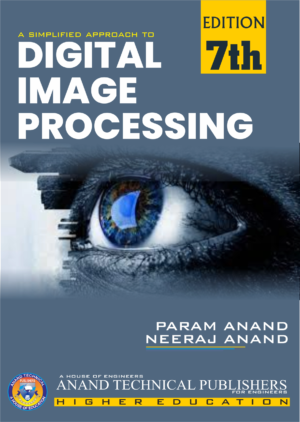Network Programming eBook|Buy GNDU M.Sc. Computer Sc. IT Books
₹395.00
Description
Network Programming book for M.Sc. Computer Science 3rd Semester for GNDU (Guru Nanak Dev University) course written by Neeraj Anand and published by Anand Technical Publishers offers a comprehensive approach to learning network programming concepts and practical skills. Below are the key features of the book:
Key Features Of The Book :
- Comprehensive Coverage:
- The book provides an in-depth exploration of core concepts in network programming, including socket programming, TCP/IP, UDP, and various networking protocols.
- Focus on Practical Application:
- Practical examples and case studies demonstrate the application of theoretical concepts, allowing students to build real-world network applications.
- Socket Programming:
- Detailed explanation of sockets (both TCP and UDP), along with their system calls and address structures for both IPv4 and IPv6.
- UNIX and Linux Standards:
- The book aligns with Unix/Linux standards, focusing on how these operating systems manage network communication, making it useful for system-level programming.
- Error Handling and Wrapper Functions:
- Simplified methods for handling errors using wrapper functions, which are essential for ensuring smooth execution of network programs.
- Advanced Topics:
- Covers advanced topics such as daemon processes, super servers, and handling zombie processes in server-side programming.
- TCP and UDP Communication:
- Detailed analysis of TCP connection establishment and termination (e.g., three-way handshake) and UDP communication semantics, with practical implementations of TCP/UDP servers and clients.
- Concurrent vs Iterative Servers:
- Clear distinction between concurrent and iterative servers, along with examples on how to manage multiple client connections simultaneously.
- Protocol Independence:
- Insight into writing programs that work across different protocols, ensuring protocol independence in network applications.
- Multiplexing and Signal Handling:
- Thorough explanation of I/O multiplexing using select(), poll(), and signal handling techniques in servers to manage multiple connections efficiently.
- IPv4 and IPv6 Interoperability:
- Techniques and best practices to ensure seamless interoperability between IPv4 and IPv6 networks, which is critical for modern networked applications.
- Port Numbers and Protocol Usage:
- Explanation of port numbers and how they are used by common Internet applications to manage multiple services on the same machine.
- Error-Free Communication:
- Demonstrates methods to achieve error-free communication through robust error-handling mechanisms, ensuring reliability in network programming.
- Elementary Name and Address Conversions:
- Functions and techniques for converting domain names into IP addresses and vice versa, helping students understand how name resolution works in networking.
- System-Level Programming Focus:
- Heavy emphasis on system-level programming, which is essential for those looking to develop low-level networked applications.
- Practical Code Examples:
- The book is filled with numerous examples of code snippets, sample programs, and diagrams that illustrate key networking concepts and their implementations.
- Protocol-Specific Applications:
- Explores the protocol usage of popular Internet applications like web browsers, email clients, and file transfer systems, giving students real-world context.
- Simplified Learning:
- The content is written in a clear and concise manner, making complex topics accessible to students at various levels of understanding.
- GNDU Curriculum-Specific:
- Tailored to the M.Sc Computer Science 3rd Semester syllabus of GNDU, ensuring that students are fully prepared for their exams and practical assignments.
- Illustrative Diagrams:
- Theoretical concepts are supported by illustrative diagrams to aid in understanding the architecture and flow of data in network applications.
This book serves as a complete guide for students looking to master network programming, providing the foundational and advanced knowledge required for both academic success and real-world application development.
GNDU Syllabus (M.Sc. Computer Science 3rd Semester)
Sockets and Socket Address structures, Concept of Zombies, Daemon Processes, Super servers, Concurrent versus Iterative servers, Protocol Independence, Error Handling : Wrapper functions, OSI Model, Unix standards.
TCP Connection establishment & Termination, Port Numbers and Concurrent Servers, Protocol Usage by common Internet Applications.
UDP Communication Semantics, UDP Echo Server, Echo Client working, Protocol Usage by Common Internet Applications.
Sockets Address Structures, Byte ordering & Manipulation Functions, TCP Socket System Calls, TCP Client-Server E.g., I/O Multiplexing, Signal Handling in Concurrent Servers.
Socket Options, Elementary Names Address Conversions, Ipv4 and Ipv6 Interoperability.


